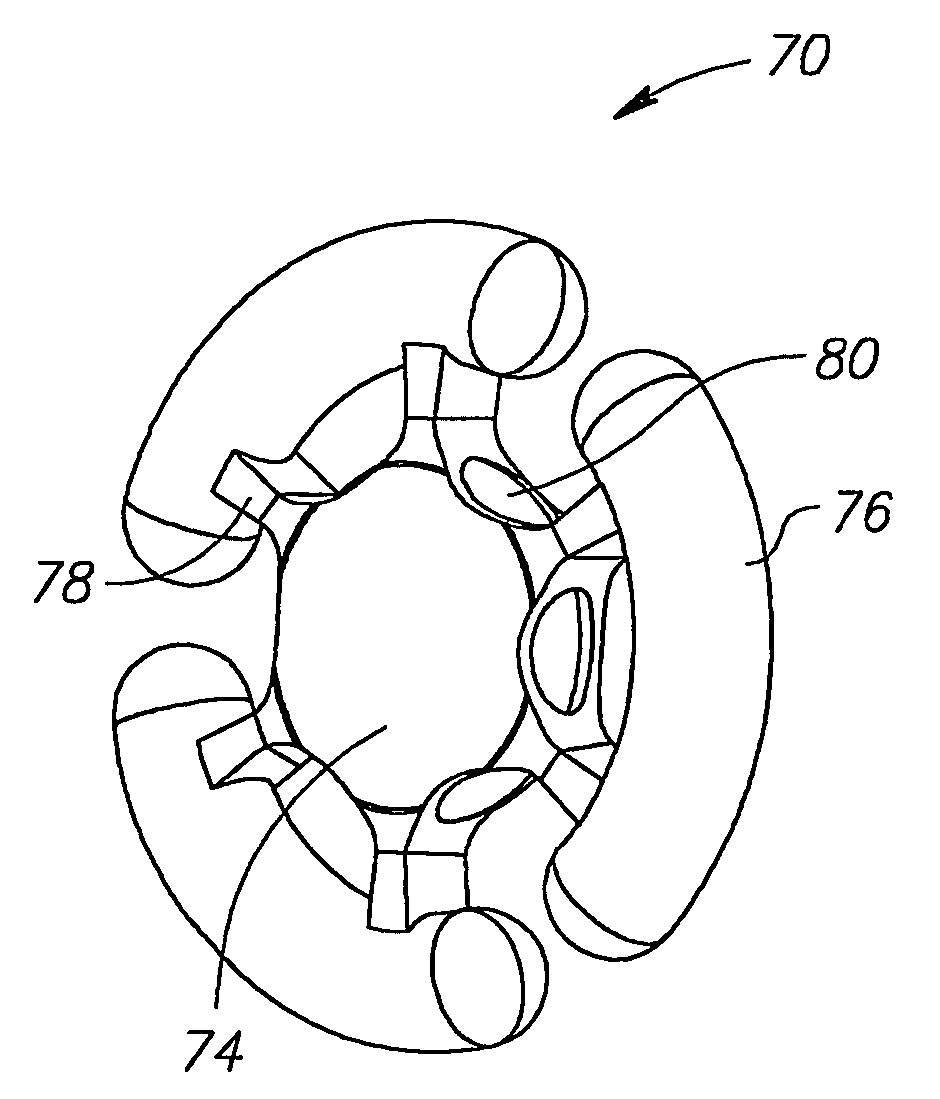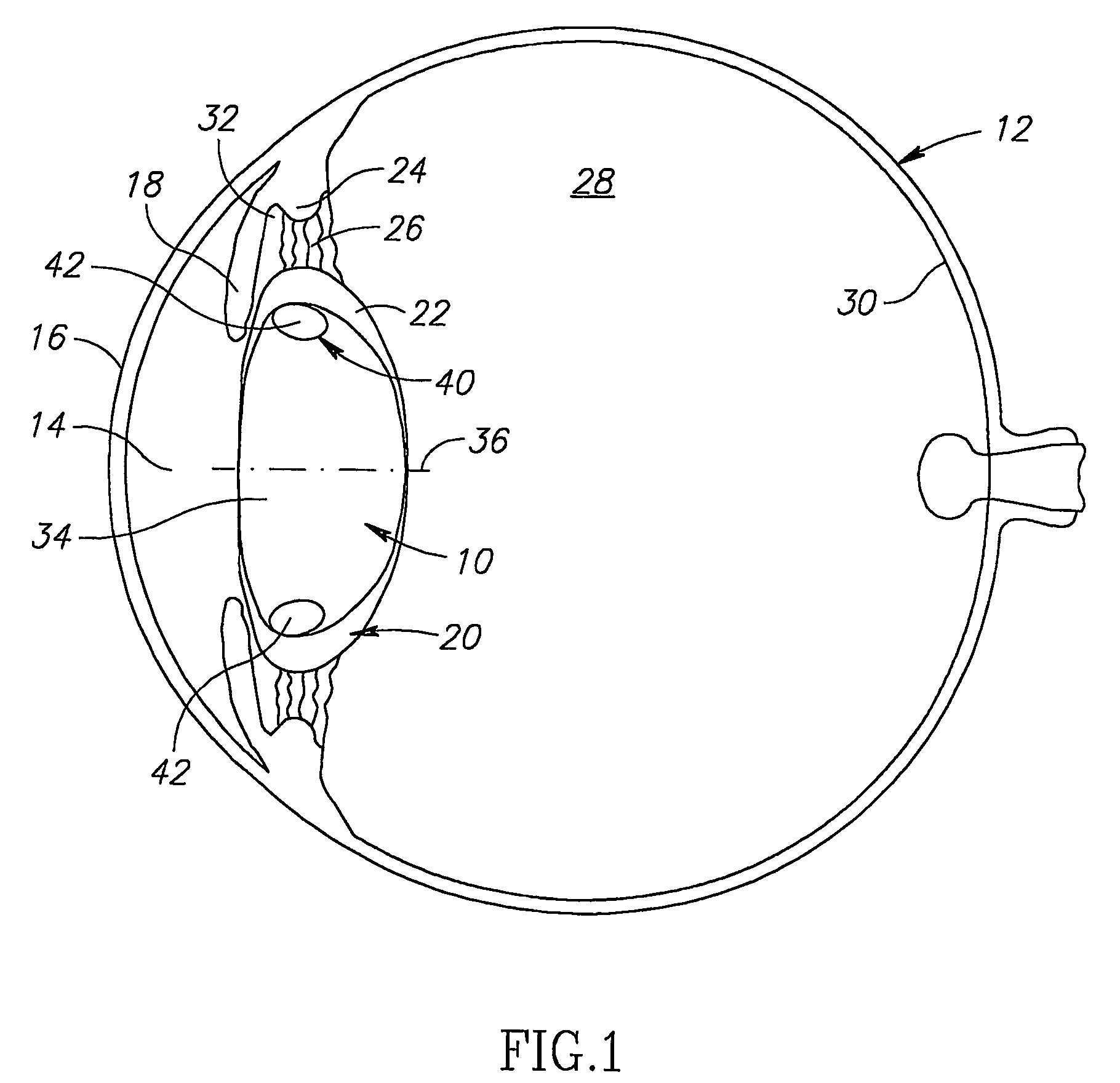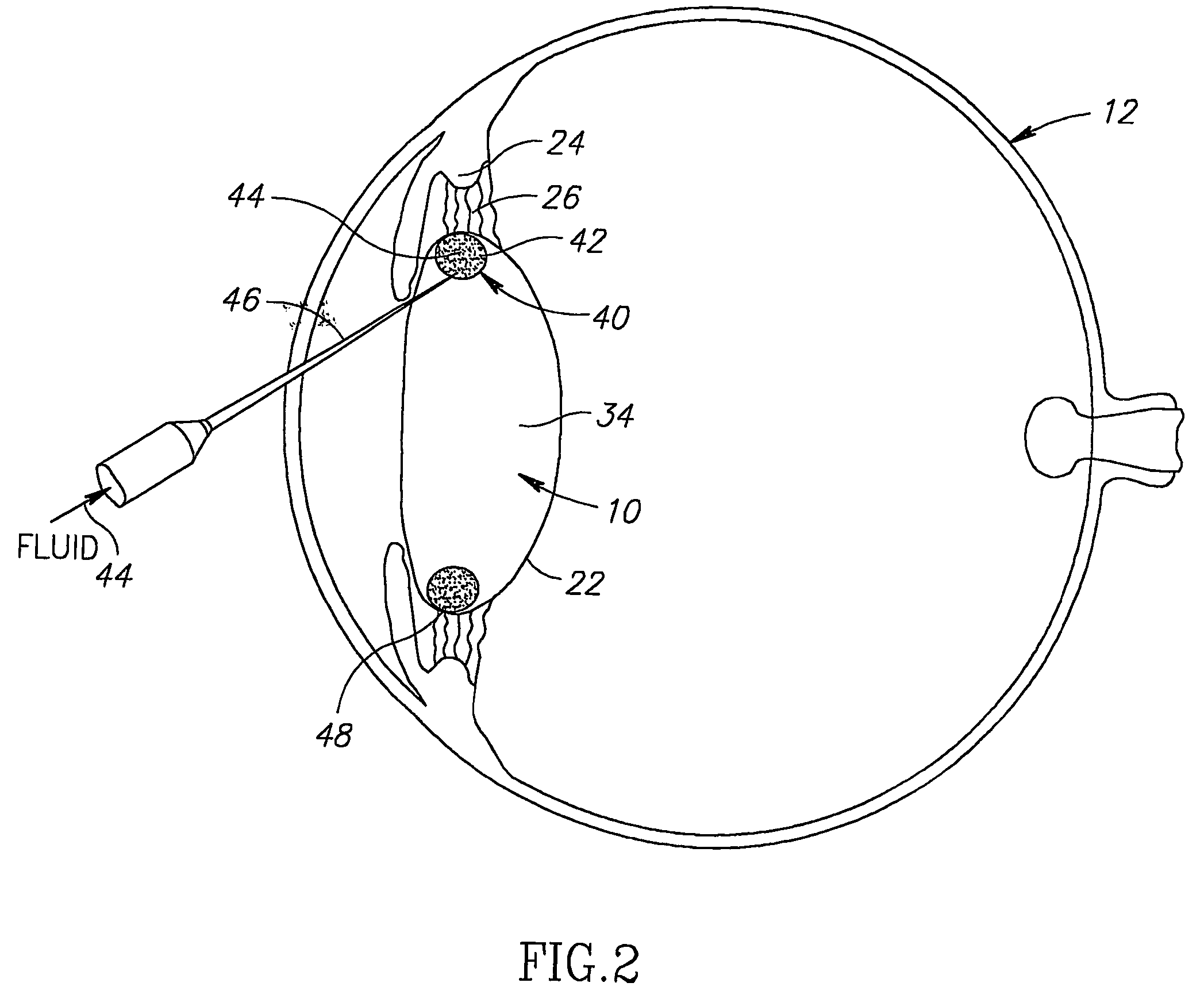Tensioning intraocular lens assembly
a technology of intraocular lens and assembly, which is applied in the field of intraocular lens (iol) assembly, can solve the problems of inability to address the loss of eye accommodation, and inability to restore the natural accommodation capability of the ey
- Summary
- Abstract
- Description
- Claims
- Application Information
AI Technical Summary
Benefits of technology
Problems solved by technology
Method used
Image
Examples
Embodiment Construction
[0028] Reference is now made to FIG. 1, which illustrates an eye 12 that has an anterior chamber 14 between a cornea 16 and an iris 18, and a posterior chamber 20 behind the iris 18 containing a crystalline lens (not shown in FIG. 1), which has a lens capsule or capsular bag 22 attached about its periphery to ciliary muscles 24 by zonules 26. A vitreous chamber 28 is behind the capsular bag 22 containing vitreous humor, and a retina 30 is at the rear of the vitreous chamber 28. Between the iris 18 and ciliary muscles 24 is an annular crevice-like space called the ciliary sulcus 32.
[0029]FIG. 1 illustrates the eye 12 with the natural lens having been removed, such as by means of capsulorhexis (a form of anterior capsulotomy, such as continuous curvilinear capsulorhexis, for example) or a slit, and extraction of the cortex and nucleus of the lens, such as by means of phacoemulsification. An IOL assembly 10, constructed and operative in accordance with an embodiment of the present inv...
PUM
 Login to View More
Login to View More Abstract
Description
Claims
Application Information
 Login to View More
Login to View More - R&D
- Intellectual Property
- Life Sciences
- Materials
- Tech Scout
- Unparalleled Data Quality
- Higher Quality Content
- 60% Fewer Hallucinations
Browse by: Latest US Patents, China's latest patents, Technical Efficacy Thesaurus, Application Domain, Technology Topic, Popular Technical Reports.
© 2025 PatSnap. All rights reserved.Legal|Privacy policy|Modern Slavery Act Transparency Statement|Sitemap|About US| Contact US: help@patsnap.com



